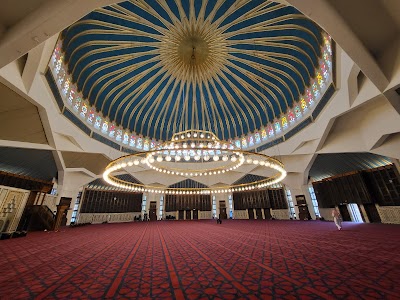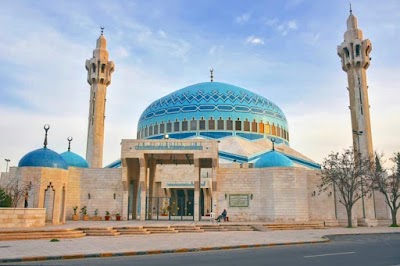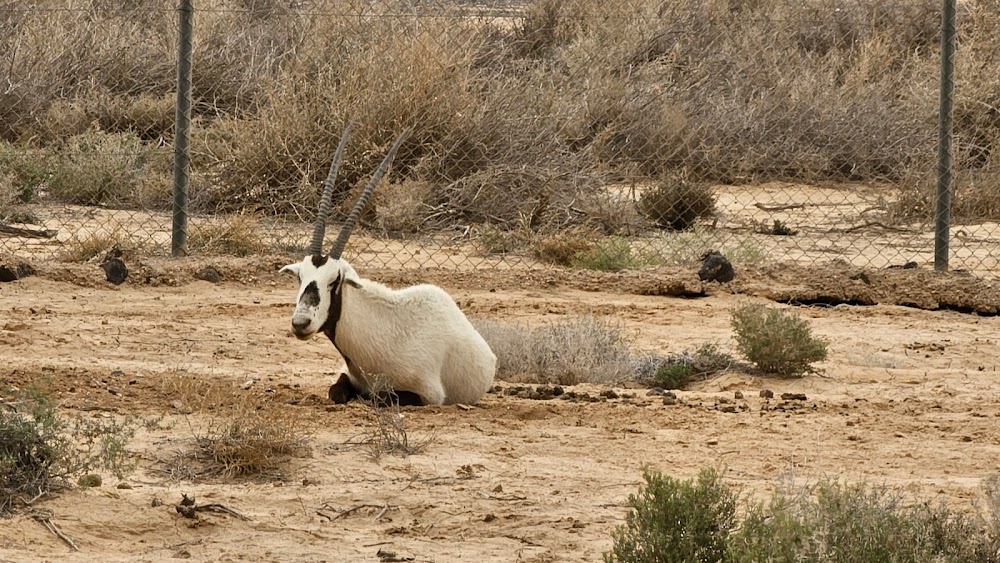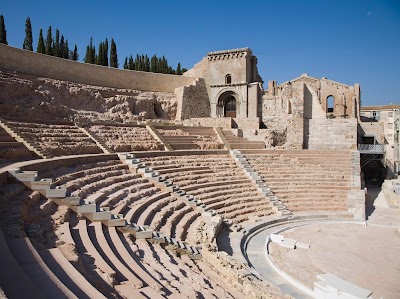King Abdullah II Mosque (مسجد الملك عبد الله الثاني)
Overview
Located in the vibrant city of Zarqa, Jordan, the King Abdullah II Mosque stands as a stunning example of modern Islamic architecture and a powerful symbol of national unity. Inaugurated in 2008, this magnificent mosque, named after Jordan's current monarch, serves not only as a place of worship but also as a cultural and historical landmark that draws visitors from around the globe.
The architectural significance of the King Abdullah II Mosque is immense. Commissioned to honor King Abdullah II, it provides a grand space for the residents of Zarqa to gather for prayer and reflection. The mosque's design harmoniously blends traditional Islamic elements with contemporary styles, creating a unique structure that resonates with both locals and tourists alike.
One of the first features that capture the eye is the mosque's impressive minaret, which towers at a remarkable 85 meters. This striking structure not only symbolizes the Islamic faith but also serves as a navigational landmark visible from various parts of Zarqa. Equally captivating is the mosque's dome, adorned with vibrant blue and white patterns that evoke the vastness of the sky and feature exquisite calligraphy of Quranic verses.
Inside, the mosque is a marvel of craftsmanship and spirituality. The main prayer hall accommodates up to 2,500 worshippers, with additional space in adjoining halls and courtyards. The hall features intricate mosaics, stunning chandeliers, and plush carpets, creating a serene atmosphere that invites contemplation. The mihrab, or prayer niche, is designed with beautiful geometric patterns and Quranic inscriptions, guiding the faithful during their prayers.
A unique aspect of the King Abdullah II Mosque is its use of modern technology to enhance traditional worship practices. Equipped with an advanced sound system, the imam's voice carries clearly throughout the expansive space. Additionally, energy-efficient lighting and climate control systems ensure a comfortable environment for worshippers year-round.
Beyond its spiritual role, the mosque serves as a community hub, offering a library rich in Islamic literature, manuscripts, and modern publications. It hosts religious lectures, educational workshops, and various cultural events throughout the year, aiming to engage the community and promote a deeper understanding of Islamic heritage and values.
For visitors, the King Abdullah II Mosque provides a profound insight into Islamic worship and Jordanian culture. Open to non-Muslim visitors outside of prayer times, the mosque requires adherence to a dress code and code of conduct. Visitors should cover their heads, wear modest clothing, and remove their shoes before entering the prayer halls. Guided tours are available to enrich the experience, offering a comprehensive understanding of the mosque's history, architecture, and significance.
The mosque’s location in Zarqa is also remarkable. As one of Jordan's largest cities, Zarqa is an industrial hub with a rich history and diverse population. The city offers various attractions, including parks, markets, and historical sites, making a visit to the King Abdullah II Mosque part of a broader exploration of Jordanian life and culture.
Additionally, the mosque holds special significance due to its dedication to King Abdullah II, who is known for promoting peace, tolerance, and interfaith harmony both within Jordan and globally. The mosque stands as a testament to these values, symbolizing unity and cooperation among people of different backgrounds and beliefs.
In conclusion, the King Abdullah II Mosque in Zarqa is more than a religious site; it embodies Jordan’s historical depth, modern progress, and cultural richness. Whether you are a history enthusiast, architecture lover, or spiritually inclined traveler, visiting this mosque promises a lasting impression of Jordan’s heritage and hospitality. So, don your most respectful attire, open your heart and mind, and step into a realm where tradition meets modernity, and spirituality embraces community.






